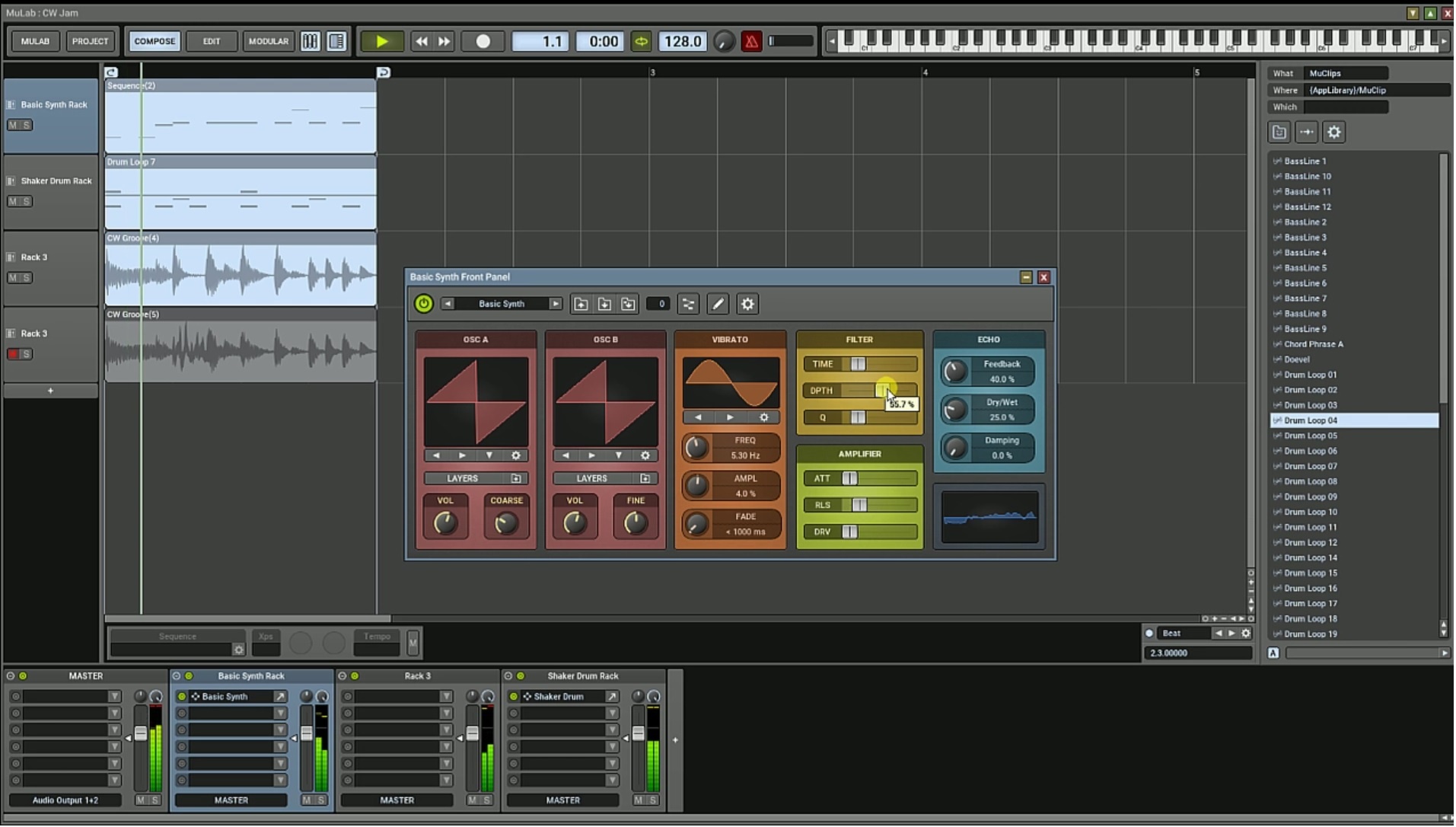
- #Mulab computer keyboard generator
- #Mulab computer keyboard Bluetooth
- #Mulab computer keyboard free
You can also plug effects in the rack, after a sound generator, and map controllers in the same fashion as for Multisampla. Map controllers again with right-click on the control interface. Plug effects directly into the Multisampla instance. NOTE: if using the filter in the Multisampla, make sure “key tracking” (knob “KT”) is set to zero in the submenu of the filter (otherwise, the filter cutoff changes based on the note pressed). to create a smooth fadeout at the end of a loop) there are also LFO and envelope generators in MultiSampla, e.g. transpose -> XPOS): Right-click on interface (knob, slider) and select “ map controller“, then move the desired control (know, slider) on the Keyboard MIDI Mapping for Realtime Control of Sampla and Plugin Effects If we want to control another simultaneous sound by another effect (or have it NOT affected by a certain effect) we need to create another multisampla instrument instance on a second rack. All sounds in it are affected by the effects and keyboard mappings in this rack. #Mulab computer keyboard generator
Important to understand: A multisampla instrument for us is an independently controlled sound generator unit.
Add Loop point for three-step loops (Start / loop start-point / loop end-point) by double-clicking the timeline. Configure Loop (Loopmodes): Start of playback, start of loop and end of loop. Rename the multisample set (sample-to-note assignements) using the cogwheel icon to be able to identify samplesets. Save Multisampla presets ("save as" icon in Multisampla, navigate to desired location). Make sure the velocity sensitivity (VS) is set to zero (VS knob in multisampler AMP section) -> ensures that the sound is played at equal volume no matter how strong you press the key (simulates a simple trigger). When you use a synth it may be necessary to transpose the synth so that sounds are audible. This makes it easier to build a functional prototype. Assigning your sounds starting with the lowest midi note value: C-2, / decimal value “0”. Make sure your samples have simple systematic names, to simplify coding later. Samples should always be uncompressed WAV or AIFF (performance/latency)! If a sample can’t be loaded, change format to aiff / wav and samplerate / bitrate to project rate. Create Sample Zone by drag & drop a soundfile (wav / aiff) or by doubleclicking the area under the keyboard and dragging the mouse. In the "Multi-Sampler" section of the "MultiSampla Front Panel" window double click the black input field (or click the small arrow) to open up the Multi-Sample view. 
In the "Choose Instrument" window select Devices > Instruments > Multisampla.Create an instrument track in the rack by clicking the small plus-symbol.(also Read the information in the MuLab Doc)

#Mulab computer keyboard Bluetooth
Note, if you need to use output & input simultaneously, or if you want to use Bluetooth audio devices: On OSX you may have to create an “aggregate device” combining Input / Output (builtin) or to enable the use of Bluetooth Audio devices (which show up as two separate devices in the Audio-midi Setup). In case your midi keyboard/controller offers “presets”, make sure you NEVER change the MIDI keyboard/controller preset, once selected, as this may change the controller assignements!. 
Usually, the Note “0” corresponds to the Note “C-2” (sometimes “C-1”). This makes sure that your Note-Trigger events start with the lowest MIDI Number (= 0). Make sure the Midi Keyboard is set to the lowest octave using the "transposition" function/buttons.Make sure MIDI interface is activated (in menu “edit” -> midi setup) and running (check using midi monitor in menu MuLab > Help).(see also MuLab Online Help and the MuLab Forum at KVR) to control the volume on the mixer or playback) which in our case would be confusing) (Other DAWs have several pre-assigned controllers (e.g. The interface has its own logic (but that is the case for almost all music production software.) but once the principles are clear it offers an efficient workflow and is easy to use.Īlso, MuLab does not require an installation and can be run from a USB stick which simplifies distribution and testing.Īnother advantage is that MuLab is quite agnostic to MIDI control numbers, which makes it very flexible for mapping. It features a powerful Multisampler environment and lots of useful effects out of the box.
#Mulab computer keyboard free
It offers a free version with some limitations. MuLab is a lightweight, crossplatform, modular music production environment. Interaction Design Wiki ・ Sonic Interaction Design MuLab Using MuLab







 0 kommentar(er)
0 kommentar(er)
